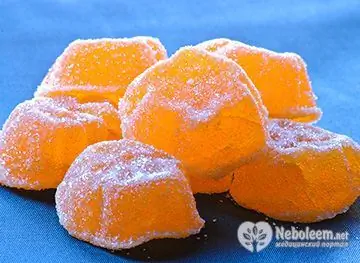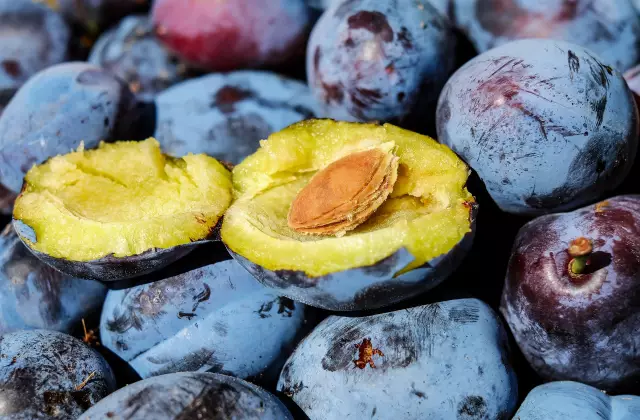- Author Rachel Wainwright [email protected].
- Public 2023-12-15 07:39.
- Last modified 2025-11-02 20:14.
Calorie content of sushi

Sushi or sushi is a traditional Japanese dish that consists of a large number of ingredients, so the calorie content of sushi depends on the food used to prepare it.
Traditional Japanese sushi:
- Nigirudzushi (nigiru - Japanese for a handful) is the most common cooking method used in European cuisine;
- Makizushi - a rice bun with a filling inside, wrapped in noria algae leaves;
- Oshidzushi - rice packed in a small wooden box with fish on top;
- Chirashizushi - Rice laid out on a dish, sprinkled with vegetables or seafood on top.
The basis for the preparation of any type of sushi is specially boiled rice of special sorts. Rice, which is used for sushi, has a caloric value of 330 to 340 kcal per 100 g.
Sushi diet
Considering that sushi is portioned food, the amount of calorie content of sushi in the diet is calculated not per 100 g, but per 1 piece. Depending on the products used to prepare sushi, the calorie content ranges from 60 to 100 kcal per 1 piece.
Sushi diet is recommended not only because of the low calorie content of sushi and rolls, but also as a diet rich in valuable nutrients, vitamins and minerals with a minimum content of fats, represented mainly by polyunsaturated fatty omega-3 acids.
Another advantage of the sushi diet is its satiety. With a low calorie content of sushi, due to the large amount of complex carbohydrates and fiber contained in rice, the stomach is well filled, and the food is digested for a long time and is slowly absorbed. Proteins and fats, which are present in small amounts in foods that supplement rice in sushi (sea fish, caviar, seafood, special omelet, Philadelphia cheese or tofu), increase the duration of food absorption. This allows you not to feel hunger for a long time, maintaining breaks between meals, despite the low calorie content of sushi.
Sushi diet is easy to diversify, given the large number of different options for preparing sushi with various fillings. You can eat up to five different types of sushi at any meal, since with a permissible daily caloric intake of 1500 kcal, you can eat from 15 to 25 pieces per day. In addition to sushi, it is allowed to diversify the diet with salads, miso soups and sashimi.
Sushi diet is contraindicated in case of a tendency to allergic diseases, gastritis and stomach ulcers.
Varieties of rolls and sushi, calorie content
In the menu of Europeanized sushi - bars and restaurants, the following types of sushi are most often found:
- Rolls (sushi maki, norimaki, makizushi) - thin, thick or twisted sushi wrapped in noria seaweed;
- Nigiri (nigiri-zushi) - molded sushi;
- Uramaki (shakamaki) - round, medium-sized "inside out" rolls with several types of fillings;
- Temaki-sushi - sushi wrapped in noriya seaweed, rolled in the form of small bags;
- Inari - bags made from a special omelet or tofu cheese stuffed with rice and other sushi ingredients;
- Sashimi - seafood cut into thin slices or raw fish loin;
- Gunkan (gunkanzushi) - small oval sushi, shaped like boats or boats, stuffed with rice on top;
- Chirashi-zushi (gomoku-zushi, bara-zushi) - loose sushi, reminiscent of rice salad.
Below we consider the calorie content of sushi and rolls, depending on the type and filling:
- Rolls (type "California") with cucumber or avocado, shrimp or crab meat and flying fish roe - 100 kcal;
- Rolls with vegetables or avocado - 50 kcal;
- Rolls with cucumber and crab meat, avocado or lettuce - 75 kcal;
- Rolls (like "Philadelphia") with cucumber with different fat content of cheese - from 100 to 125 kcal;
- Rolls (like "Philadelphia" or "Moscow") wrapped in thin layers of salmon fillet stuffed with smoked eel - 195 kcal;
- Rolls with cucumbers and Japanese omelette - 125-140 kcal;
- Rolls ("Dragon" type) wrapped in smoked eel stuffed with avocado or cucumber with Philadelphia cheese - 260 kcal;
- Sushi with smoked eel, salmon, shrimp, scallop, tuna, octopus, squid, yellowtail (lachedra) or Japanese omelet - 10-50 kcal;
- Nigiri with crab, octopus, salmon or flying fish roe - 45-55 kcal;
- Sashimi from squid - 75-87 kakl;
- Sashimi from yellowtail (lakedra), octopus or sea bass - 95-105 kcal;
- Halibut or tuna fillet sashimi - 100-110 kcal;
- Salmon fillet sashimi - 170 kcal;
- Smoked eel sashimi - 330 kcal.
The calories in sushi provide the body with the energy it needs. In addition, sushi components are a source of iron, calcium, iodine, vitamin B12, complex carbohydrates, fiber, polyunsaturated fatty acids Omega-3 and Omega-6, high-quality proteins.
How many calories are in sushi ingredients
Sushi, especially Europeanized, is a convenient and healthy food constructor, in which, using the main ingredients as a basis and taking into account personal taste preferences and the availability of an affordable food set, you can invent wonderful food for yourself. What is the content of calories in sushi, it is important to know, subject to diet.

Calculating the calorie content is simple, knowing how many calories are in sushi ingredients (the average value of kcal per 100 g of product):
- Rice - 335;
- Smoked eel - 326;
- Salmon - 195;
- Shrimp - 100;
- Crab meat - 87;
- Mussels - 77;
- Red caviar - 250;
- Tobiko (flying fish roe) - 280;
- Philadelphia cheese - 253;
- Tofu cheese - 76;
- Spicy sauce - 588;
- Unagi sauce - 236;
- Teriyaki sauce - 119;
- Soy sauce - 70;
- Wasabi - 60;
- Ginger - 17;
- Rice vinegar - 12.
Regardless of the calorie content, sushi is a great food, provided it is made with the freshest fish, seaweed, the finest rice and other quality ingredients.
Found a mistake in the text? Select it and press Ctrl + Enter.






